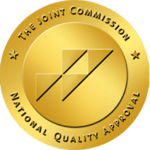While there is no single cause of addiction, it is clear that both genetic and environmental factors play a role. If you have a family history of addiction, you may be more at risk for developing the condition yourself.
There are several reasons why a person may be more likely to develop an addiction if it runs in their family. First, they may be more genetically predisposed to addiction. Second, they may have grown up in an environment where drug use was common. And third, they may have been exposed to trauma or stressors that increase the risk of addiction.
But even if addiction doesn’t run in your family, you may still be at risk if you’re exposed to drugs or alcohol at an early age or if you experience traumatic events. No matter what your personal history is, it’s important to seek support.
Among Americans aged 12 years and older, 31.9 million are current illegal drug users (used within the last 30 days).11.7% of Americans 12 and older overuse illegal drugs. 53 million or 19.4% of people 12 and over have used illegal drugs or misused prescription drugs within the last year. 8.1 million of 25.4% of illegal drug users have a drug disorder.
What is Epigenetics?
Epigenetics is the study of how genes are expressed, or “turned on and off.” This can be influenced by environmental factors such as:
- Diet
- Stress
- Exposure to toxins, and more
Epigenetics is a relatively new field of science, but it’s beginning to shed light on how addiction might be passed down from one generation to the next.
It’s long been thought that addiction is primarily a matter of choice. If someone chooses to use drugs or alcohol, they’re more likely to become addicted. But this view is beginning to change as we learn more about epigenetics. It’s now thought that addiction may have a strong genetic component that is passed down from parent to child.
The Long Term Effects of Substance Abuse in DNA
The long-term effects of substance abuse can be passed down in DNA. Studies have shown that the children of addicts are more likely to become addicts themselves.
Inherited traits are determined by genes that are passed down from parent to child. Genes are sections of DNA, and they provide instructions for the development and function of every living thing. Most genes are the same in all people, but some genes can vary slightly from person to person.
These variations account for the many differences that exist among individuals, such as eye color, hair color, and height. Some genetic variations result in traits that can be passed down from generation to generation.
For example, if a person has a genetic predisposition for a certain disease, they may pass that predisposition on to their children.
In some cases, a person may not develop the disease themselves, but they can still pass on the predisposition to future generations. Thus, genetic predispositions can be passed down through DNA from one generation to the next.
Who Is Most at Risk?
It’s important to remember that addiction is a complex condition that is influenced by both genetic and environmental factors.
Genetic Factors That Could Cause Addiction
The genetic factors that could cause addiction are complex and not yet fully understood. However, we do know that addiction is a disease that is passed down in families. If you have a parent or grandparent who is addicted to drugs or alcohol, you are more likely to develop an addiction yourself.
Environmental Factors That Could Influence Addiction
Environmental factors play a role in addiction as well. If you’re exposed to drugs or alcohol at an early age, you’re more likely to develop an addiction later in life. This is because the brain is still developing during adolescence, and exposure to drugs or alcohol can change the way the brain develops. Additionally, if you live in a community where drug use is common, you may be more likely to develop an addiction.
Do Both of These Factors Have an Impact?
Both of these factors, genetics, and environment, can play a role in addiction. 47% of young people use an illegal drug by the time they graduate from high school; other users within the last 30 days include:
- 5% of 8th graders
- 20% of 10th graders
- 24% of 12th graders
Why Adolescents Are at Most Risk for Substance Abuse
There are a number of reasons why adolescents are at most risk for substance abuse. One is that the brain is still developing during adolescence and is especially vulnerable to the damaging effects of drugs and alcohol.
Additionally, peer pressure is often very strong during this time, and peer groups can have a big influence on an individual’s decision to use substances. Additionally, environmental factors such as poverty, trauma, or exposure to substance abuse can increase the risk of addiction.
What is the Most Effective Way to Prevent Addiction?

Which Substance Use Disorders are Typically Passed Down?
Despite the varying substances used, certain substance use disorders tend to run in families. For example, alcoholism is often passed down from one generation to the next. Additionally, individuals who have parents or grandparents who struggled with addiction are more likely to develop an addiction themselves.
- In 2020, 50.0% of people aged 12 or older (or 138.5 million people) used alcohol in the past month (i.e., current alcohol users) (2020 NSDUH).
- Among the 138.5 million people who were current alcohol users, 61.6 million people (or 44.4%) were classified as binge drinkers.
- 17.7 million people (28.8% of current binge drinkers and 12.8% of current alcohol users) were classified as heavy drinkers (2020 NSDUH).
How Does Addiction Affect the Birth Outcome of Children?
Addiction can affect the birth outcomes of children in a number of ways. Additionally, children born to mothers who are addicted to drugs or alcohol are at an increased risk of developing an addiction themselves.
There are a variety of birth defects that can result from substance abuse. One of the most common is Fetal Alcohol Syndrome (FAS). FAS is characterized by physical abnormalities, learning disabilities, and behavioral problems. Babies with FAS often have a small head, underdeveloped facial features, and low birth weight.
They may also suffer from:
- Cognitive impairments, such as difficulty with memory, speech, and decision-making
- Issues with hyperactivity, impulsivity, and aggression
Another common birth defect associated with substance abuse is the cleft lip or palate. This occurs when the tissue that forms the lips or roof of the mouth does not fuse together properly during pregnancy. Cleft lip and palate can cause feeding difficulties, hearing problems, and speech delays.
In severe cases, it can also lead to respiratory problems. If a baby is born prematurely, they may suffer from:
- Respiratory distress
- Feeding difficulties and a host of other health problems
Birth defects caused by substance abuse can have a lifelong impact on both the child and their family. Therefore, it is important for pregnant women to abstain from alcohol and illicit drugs throughout pregnancy.
What is the Difference Between Physical Dependence and Addiction?
Physical dependence is when the body becomes used to the presence of a substance and experiences withdrawal symptoms when that substance is removed. Addiction is when an individual compulsively uses a substance despite negative consequences. Physical dependence can occur without addiction, but addiction always involves physical dependence.
Co-Occurring Disorders: Is Addiction Genetic or Environmental?
It is well-established that addiction is a brain disease. The environment also plays a role in addiction. People who live in poverty or who have experienced trauma are more likely to develop substance use disorders.
One area of research that is beginning to shed light on this question is the study of co-occurring disorders. Co-occurring disorders are conditions that occur together, and they are often found in people with addiction.
The most common co-occurring disorders are:
- Anxiety disorders
- Mood disorders
- Personality disorders
Research suggests that these conditions share some of the same risk factors as addiction, including genetic vulnerability and exposure to trauma or stress. It is believed that co-occurring disorders develop as a result of an interaction between genetic and environmental factors.
This interaction creates a unique combination of risk factors that can lead to the development of addiction. Understanding how co-occurring disorders develop is an important step in prevention and treatment.
Enter a New Phase of Improvement at Westwind Recovery®
Westwind Recovery® is a haven for addiction recovery in Los Angeles because of our comprehensive and holistic approach to treating addiction. Our center offers a wide range of treatment modalities, including individual and group therapy, 12-step meetings, and experiential therapies.
Westwind also places a strong emphasis on aftercare, which includes continued support and resources for alumni. In addition, the center is located in a beautiful and secluded setting, which promotes healing and recovery.
The staff at Westwind is also committed to providing compassionate and individualized care. As a result, Westwind Recovery® is an ideal place for anyone seeking to overcome addiction. If you or someone you know is struggling with substance use, reach out to us today.

Dr. Deena is the Chief Clinical Officer of Westwind Recovery®, an award-winning outpatient treatment center in Los Angeles where she oversees the clinical and administrative program and treatment methods. Dr. Deena is a doctor of psychology and licensed clinical social worker since 1993. LCSW #20628. Originally from the East Coast, Dr. Deena has worked running treatment centers, worked as a therapist in psychiatric hospitals as well as school settings and currently has a thriving private practice in the LA area. Dr. Deena has appeared regularly on the Dr. Phil Show as an expert since 2003. She has also been featured on many other TV shows, podcasts and has contributed to written publications as well as podcasts.




